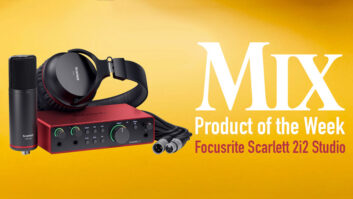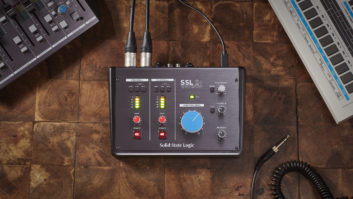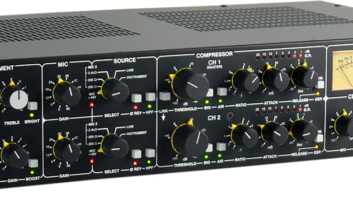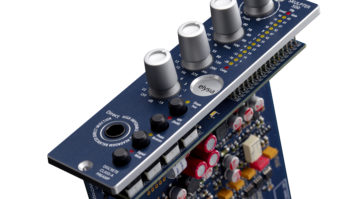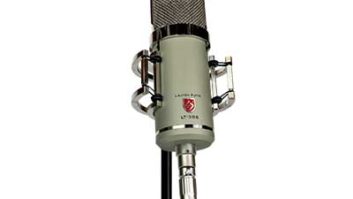The release of a new Royer studio microphone is always a reason for celebration, but that is perhaps even more the case with the new R-10 ribbon mic. Although you wouldn’t guess it from the mic’s exceptional sonic performance and build quality, at $499 (or $1,048 for a matched pair), the R-10 is the most affordable Royer mic to date. The stereo pair (which is what I had for my review period) includes two microphones with consecutive serial numbers, two swivel-mounts, and a pair of cloth storage pouches packed in a foam-lined carry case.
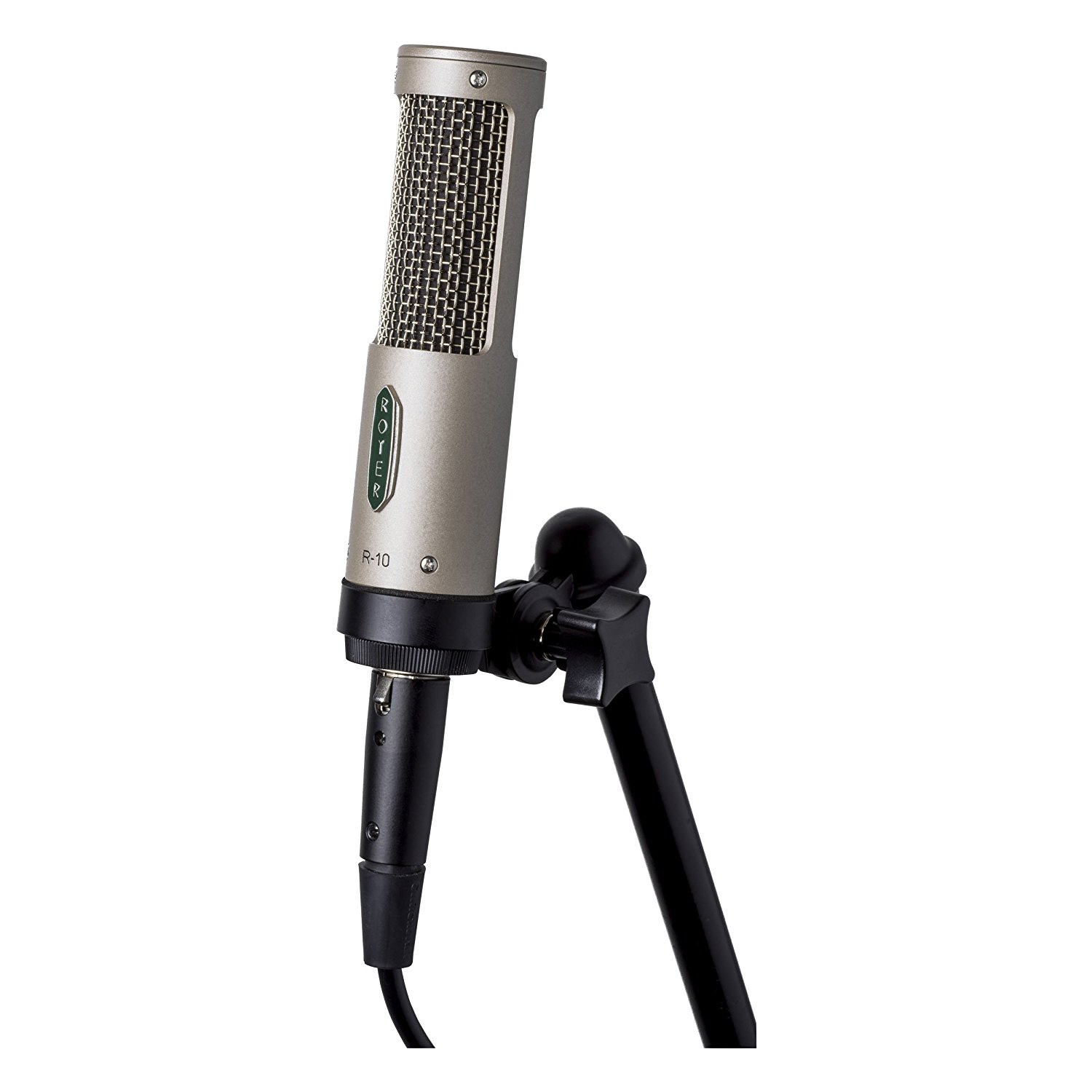
The R-10 is a mono, bidirectional (figure-8), passive electrodynamic pressure-gradient ribbon microphone that uses Royer’s patented offset-ribbon transducer and a 2.5-micron ribbon element. The offset ribbon provides a slightly different frequency response on the backside of the mic than the front (The front side can handle a higher SPL, but the back side has slightly more top-end). This is almost like having two mics in one, as it allows the side of the mic to be switched depending on the sound source. As is the case with the R-121, I default to using the front side of the mic when recording electric guitar, brass and drums, and I use the backside when recording acoustic guitar, piano and drum overheads. The ribbon is formed with Royer’s direct-corrugation process, increasing the ribbon’s sturdiness and making the ribbon less prone to sagging and stretching. Similar to other Royer R-series microphones, the R-10 is perfectly suited to handle high SPLs (135 dB @ 50 Hz or 160 dB @ 1 kHz), making it ideal for capturing loud sound sources.
Like all Royer mics, the R-10 is built by hand in Royer’s beautiful and impressive Burbank facility (I’ve been there and it’s amazing!). The work done at that facility by Royer’s craftsmen and women exhibits the greatest precision and care. Outsourcing the manufacturing of some of the microphone’s components—primarily the mic body—to China allows Royer to build a more affordable microphone. Keeping the ribbon fabrication and installation—and manufacture of other key components—in-house ensures consistency and uncompromised quality.
In many ways, the R-10 is a second-generation R-101 (now discontinued), but it does have its own sonic character—and just because it’s affordable doesn’t mean it’s an entry-level microphone. The R-10 is physically smaller than the R-101. It is slightly narrower, nearly 2 inches shorter and weighs 3.5 ounces less. Mounted on the front of the R-10 is the classic green Royer badge, with “R-10” engraved below. The mic includes a modest black swivel-mount that screws directly onto the mic’s threaded stem. The mic’s low residual noise makes it perfectly suited for recording quiet sound sources. It has a frequency response of 30 Hz–15 kHz ±3 dB and a sensitivity of -54 dBv (re. 1v/pa). The mic includes a 5-year warranty, and the first re-ribbon (within the first year) is free.
The mic incorporates a shockmounted ribbon transducer with a built-in windscreen and custom David Royer-designed step-up transformer. The R-10 employs the same three-layer wire mesh windscreen used in the R-101, but in contrast to the slotted grille found on other Royer mics, the R-10 has an open front and back. In addition to lowering manufacturing costs, this configuration minimizes standing waves and comb-filtering effects, helping the mic deliver a smooth, open, uncolored high-frequency response.
Video: When Lana Del Ray played the Bridgestone Arena in Nashville, FOH engineer Kevin Madigan and guitar tech Carl Lewis took Royer Labs behind the scenes to show how they’re using R-10 and R-121 ribbons on the electric guitars. In this video from April 2018, they talk about the sonic impact ribbon mics have on the overall FOH sound and the better musical experience ribbons provide for in-ear monitor users.
The R-10 is perfectly suited for capturing drums and percussion. I used a pair to capture stereo drum overheads (using the back side of the mics) and room. The results were wonderful in both instances. I did end up brightening the overheads slightly in the mix using the Waves Q10 plug-in, but it was nothing substantial. I used the mic on hi-hat when recording a drum kit and the results were fantastic. I used the high-pass filter on the AEA RPQ500 to dial out the drum kit’s low-frequency rumble and the result was smooth and clear—but not brittle or crisp, as is often the case with a poorly recorded hi-hat. Hand percussion records equally well with the mic, which I used to successfully record shaker and tambourine. Again, the result was a smooth, natural sound.
Royer Labs R-10 Ribbon Mic Helps Keep The Voice on the Cutting Edge
The mic does a nice job capturing vocals, sounding good on both male and female singers. The built-in windscreen was all I needed, as it does a superb job of protecting the ribbon element from plosives and wind damage without any sonic coloration.
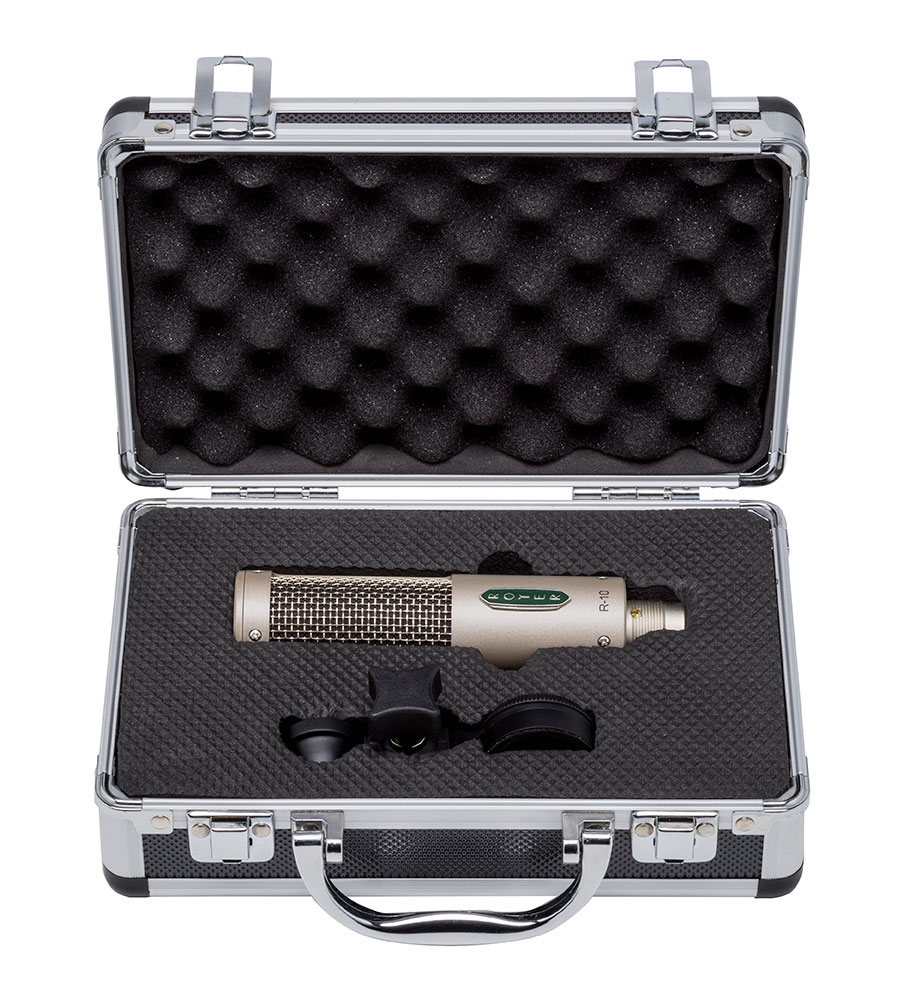
I used the mics to record a Baldwin upright and again had great results. Most people would say the biggest strength of Royer-121 is its ability to accurately capture the electric guitar, and I’ve found that is also the case with the R-10. The mic is extremely versatile and works well in nearly every instance, but it truly shines when it’s placed 3 to 6 inches in front of a screaming guitar cabinet, halfway between the rim and center of one of the speakers. Whether it’s a clean, chimey 12-string through an AC30, an over-the-top distorted Marshall JC900 or anything in between, the R-10 kills it. While the mic doesn’t seem to have the same low-frequency clarity as the R-121, it’s extremely close, and its top-end is lush. The mic couples perfectly with a Neve pre (33115 in my case) when recording louder sources, or the Gordon Microphone System (70 dB of extremely quiet gain) when recording quieter sound sources such as a fingerpicked acoustic guitar or quiet vocal.
Another strength of the R-10 is capturing brass and strings. I used the mic to record both trumpet and trombone during the review period, placing the mic about 12 inches from the bell, and had fantastic results in both instances. The microphone beautifully records violin, capturing every nuance of the instrument without ever sounding harsh or brittle.
The Royer R-10 has a smooth, natural sound coupled with an impressive frequency response and substantial headroom, making it an excellent option for virtually any sound source, especially guitar amps, drums, brass and other exceptionally loud instruments. The R-10 is surprisingly affordable and is in the same sonic class as ribbon mics costing two or three times as much, making it a great option for project and professional studios alike, as well as live use.
Royer Labs • www.royerlabs.com
